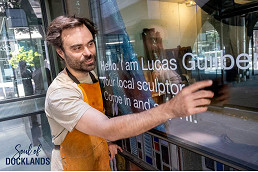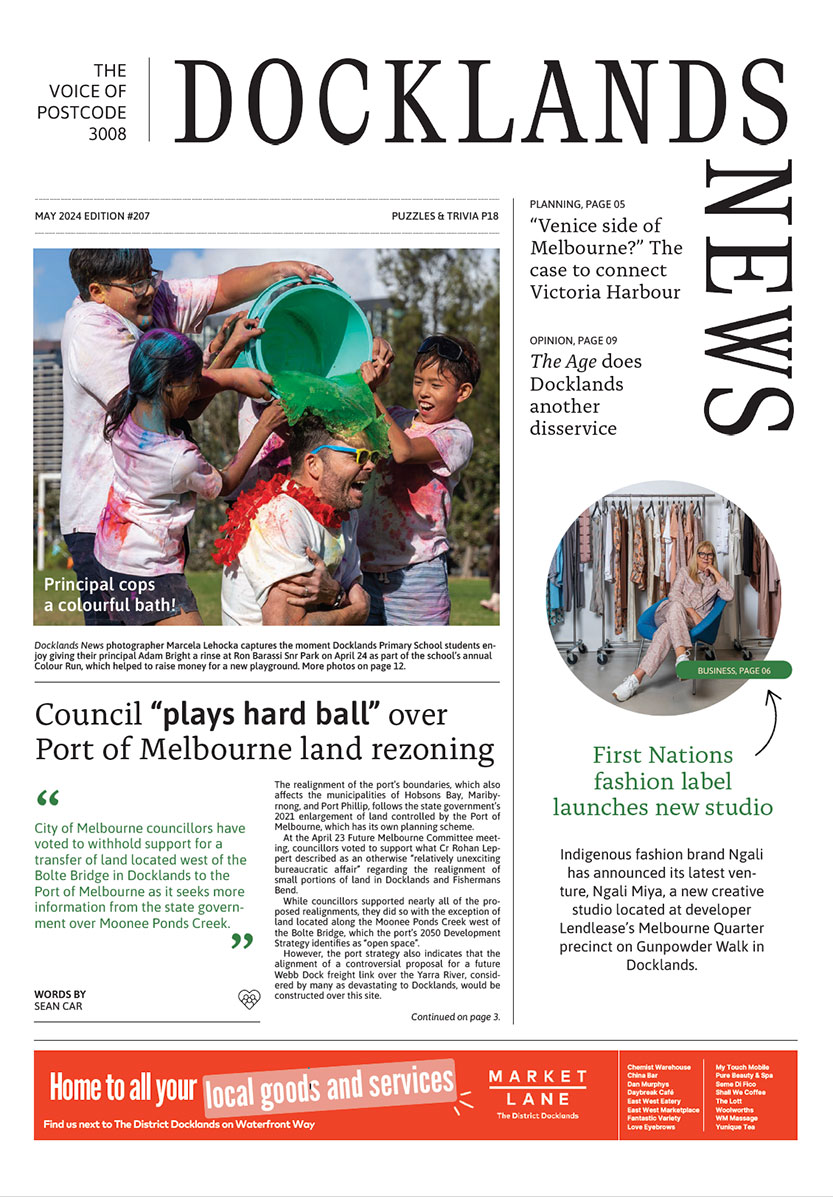Shipping Control Tower: questions remain
Until now this significant maritime infrastructure asset, the responsibility of state authority Development Victoria (DV), continues to loom as a degraded bastion of failed vision like the Wheel, Harbour Esplanade and Central Pier.
This current shabby status does not reflect the critical role the tower has played in enabling the growth and development of Melbourne and Victoria, so I take the opportunity to make the case …
Why this significant yet poorly understood, unloved Docklands maritime heritage asset, is still without a future?
Built and opened in the 1960s the technologically cutting-edge tower managed complex port operations along the Yarra River, Victoria Harbour, the estuary and into the bay. Closed and shuttered in 1980, the tower reminds us of Melbourne’s historic status as a major port city. The tower embodies the optimism, the tremendous ever-expanding Victoria Port aka Victoria Harbour, which was so long the engine room of the entire Victorian economy.
Reflect on its emergence – draining the swamp, excavating Victoria Harbour, re-routing of the river, installing innovative linear wharf design, multiple piers, goods sheds and dry-docks, etc.
From the early 1850s, there was a relentless drive to optimise the capacity and capability of the port – an extraordinarily busy period in Melbourne’s development fuelled by the recent discovery of gold in Victoria.
The Melbourne Chamber of Commerce, formed in this period, immediately made the connection between port capacity, efficient port operations and profit. It commenced campaigning for the establishment of a Harbour Trust to take responsibility for development of maritime infrastructure and port operations, and as a result Melbourne and Victoria prospered.
Port expansion and increased shipping brought greater operational complexity. In 1934 a timber octagonal watch tower was erected on North Wharf replaced in the 1960s by the technologically cutting-edge Shipping Control Tower we see today.
Architect C.J Smith designed and delivered a building consisting of reinforced concrete and providing a lift and stairs to reach the top by two decks – one for observation duties containing radar and communication equipment, the other being for amenities for its five-person, 24-hour-a-day operation; a significant improvement from the original timber watch tower.
Shipping news was front-of-mind for the public in those days. The tower provided important information on ships, commodities, and importantly, people via an automated telephone service. This public shipping information service was immensely popular with 116,995 calls taken in the first year.
Given this heritage significance, why then do we see that the Shipping Control Tower was specifically omitted from the Docklands Conservation Management Plan (2012), and why have we seen so little activity in this space since?
It’s the view of the Melbourne Maritime Heritage Network (MMHN) that the inclusion of the Shipping Control Tower in the Conservation Management Plan would have afforded appropriate protections and might well have prompted action, but then as we have seen with other heritage assets across the Docklands, it might not.
Despite the long litany of promises we are yet to see a coherent Docklands vision. Questions arise, but answers are limited. Contrast the ambitious demonstrably successful Harbour Trust’s 19th century vision for Victoria Port – planning for growth, adopting innovation, investing in the future. Compare this with planning deficiencies identified in the Docklands precinct today, such as …
- Why the Bolte Bridge was designed five metres too low and without capacity for rail-line?
- Why the primary school reached its capacity so rapidly and now holding classes classrooms in The District shopping centre?
- Why Docklands is woefully deficient in public open space?
- Why there are no plans for a high school at all?
- Why an AFL stadium turned its back on prime water views?
Now, the good news
Despite this focus DV has recently responded to community and MMHN advocacy and has now committed to a repair/remediation program for the Shipping Control Tower. The successful tender for the works will be announced at the end of April and works will be completed in September 2024. Quoting DV, “The remediation program includes but is not limited to:
- Concrete repair
- Re-render of entire tower
- New windows and external doors
- Handrail repair and painting
- New roof membrane
- Clean and sanitise internal areas”
MMHN is pleased with such progress albeit way too late. Remediation such as this is at best a stabilisation, not a future. MMHN argues that key questions of DV remain: what, and when? •

Council “plays hard ball” over Port of Melbourne land rezoning







 Download the Latest Edition
Download the Latest Edition
